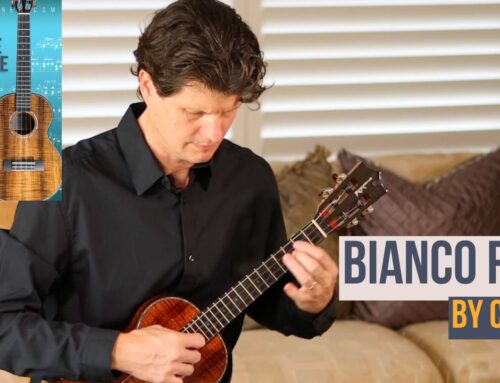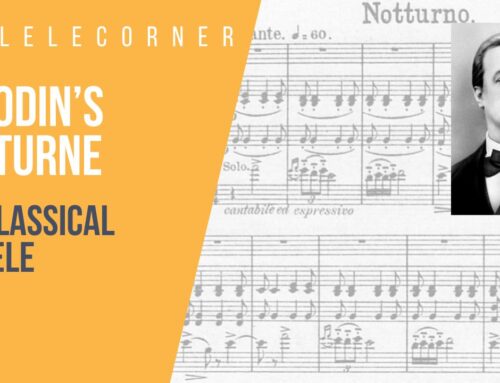Playing in front of an audience can be a nerve wracking experience for all levels of musicians from beginners to professionals who have performed for decades. I have learned some important lessons over the years as a performer and feel that performing can be one of the great joys of making music. All you need is good preparation, a positive attitude, and a good connection with the audience.
Kanikapila: A Jam Session
The first step in getting over stage fright is to get experience playing in low-pressure settings. Performing unamplified with a large group at a jam session is a great way to start. You can play along or even stop playing and the music continues on. Follow others around you and can blend in. I often teach at workshops that have regular kanikapila sessions and always enjoy seeing students find their way and become more confident performing over time.
Play for Family and Friends
Another great low-pressure performance situation is to play for family and friends. I started around the age of 12 doing regular Christmas concerts for my family. First, I would spend weeks preparing and learned lots of new music. Early on I learned that the more prepared I was with the songs I played, the more relaxed I felt performing. So I would memorize music. Then I would visualize the fingerings without an instrument in my hands. I would also record practice sessions to hear how things were sounding. And I would do lots of “live” run-throughs playing a set of music without stopping. Along the way I learned to play through mistakes and keep the momentum going.
Playing in a band
I played in a stage band and rock band in High School. Then I played in many groups throughout college, getting more and more performance experience. Playing with groups helped me develop the ability to listen to others while playing my parts. And it helped me find appropriate parts to play, improved my rhythm, and gave me more confidence as a performer. I also spent countless hours playing along with recordings, which helped to develop my ear, improve my tone, and keep the flow and momentum of the music going while performing.
Solo playing
My first solo gigs were at small coffee shops on Oahu, private parties, house concerts, and weddings. I would practice 10 hours for a one-hour performance where the audience was there to listen but also there to just hang out and socialize. What I learned is that what led to poor performances was usually playing music that was above my playing level, not being prepared, and not being comfortable with the amplified sound.
Getting Familiar
I quickly learned to find how to get the live sound I wanted and developed a set list that I was very familiar with. To start, I would play a song that was easy to play to get over those initial jitters and settle in. Getting my feet wet with small, low-pressure performances opened up more opportunities for me. Then I was hired to perform regularly at venues around Waikiki and Honolulu.
Getting Used to New Venues
I worked on learning new material regularly, started composing more, started recording albums, and also started collaborating with other musicians. Each venue that I performed in, from small restaurants to large concert halls, each felt different. Sometimes not being familiar with a venue or type of audience made me nervous. But I learned that audiences were there to enjoy the music and were on my side. If I had fun and enjoyed performing, they would enjoy themselves as well.
Getting Comfortable
I focused on this along with all the things I learned previously. Be very prepared; play through mistakes; warm up before performing; arrive on time to get ready; and feel comfortable with my live sound by doing a good sound check before a performance whenever possible. A few essential techniques I use in performance to stay focused and connected with the music is to think one measure ahead of where I am, visualize the music, and focus on expression, phrasing, and dynamics more than worrying about the audience.
Getting Positive
Positive thinking is essential and playing music you love will always help you overcome those thoughts that get in the way of a good performance. As soon as I think that I am sounding bad or start worrying about how the audience is judging me, the quality of my performance diminishes. Always remember why you love the ukulele and the songs you are performing and you will feel at ease celebrating the great gift of music.
***
At Ukulele Corner Academy we focus on learning fingerstyle ukulele in a structured way so you can always feel prepared the next time you perform in front of an audience, whether for friends and family, at a kanikapila, or a big hall. Join Ukulele Corner Academy today!




Leave A Comment